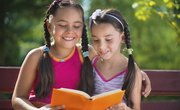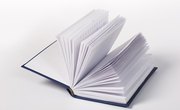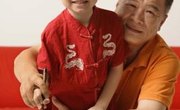"Unlike my mother, I did not believe I could be anything I wanted to be. I could only be me." Culture clashes between generations, historical events compared to personal ones, expectations for the American Dream and ancient/modern analogous fables make up the cultural and literary themes of Amy Tan's "The Joy Luck Club." For students reading the novel, several good activities will help them realize these concepts.
Analogies and Tales in "Joy"
Tan packs her novel with analogies comparing like elements, such as, "We would come back like newborn kittens." One excellent before-or-during reading activity is to have students examine several of Tan's analogies, then discuss and journal, with a partner, an evaluation of what they tell about character and interaction. Students can analyze her frequent animal-based analogies and her method of showing vulnerability through creature-human comparisons. Tan's novel also employs numerous fables; a further activity is to have students write their own analogy-based myth -- "I acted like this animal ..." -- and evaluate their comparison methods.
American Dreaming
The American Dream, and the many barriers to it including language and culture, is one of the central themes of "Joy Luck Club." One activity to clarify this theme is for students in groups to choose a country, excluding China, from which people are immigrating and research reasons for coming to America, including the wages and educational levels of the immigrant's country, the economic and political distresses of his homeland and the difficulties immigrants face when trying to assimilate into American culture.
History and Family Counterpoint
The history of China, as Amy Tan was affected by it, is the backdrop for the novel. One excellent before-or-during activity is to have students research the novel's historical context and report out individually, at different times in the story, on the events that are happening in Chinese history at the same time Tan's narrative takes place. Discuss how her country's history and her family's adventures in America provide a point-counterpoint; further assignments in writing and discussion might evaluate her use of history as a symbolic representative for her family's interactions.
Family and Personal Clashes
Tan's novel replicates four family interactions, all of them demonstrating parental disapproval of both American culture and their children's responses to it. In-class writing activities can reflect these jigsaw clashes with post-reading, on-demand writings asking how a student's family affects his life, and asking him to detail how his family's dreams for him conflict with his own dreams. This is an especially fruitful critical thinking activity for students nearing graduation, a time when their own dreams are uppermost in their priorities.
Related Articles
References
Resources
Writer Bio
Michael Stratford is a National Board-certified and Single Subject Credentialed teacher with a Master of Science in educational rehabilitation (University of Montana, 1995). He has taught English at the 6-12 level for more than 20 years. He has written extensively in literary criticism, student writing syllabi and numerous classroom educational paradigms.











